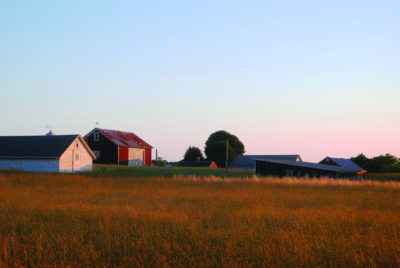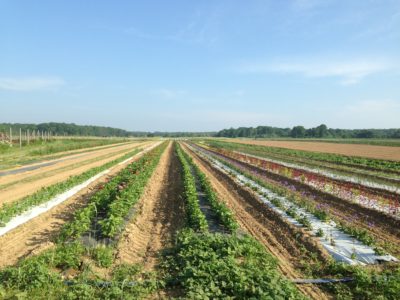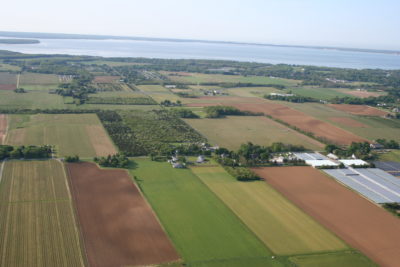Our Work / Conservation
Conservation Criteria
Since the Peconic Land Trust is recognized by the Internal Revenue Service as a 501(c)(3) public charity, donations of land and/or conservation easements are considered charitable contributions, and donors may benefit from significant tax benefits. The Internal Revenue Service requires that the Trust be able to demonstrate that its conservation activities and acquisitions result in a genuine public benefit. In addition, the Trust must be certain that it can fulfill the stewardship responsibilities associated with its land protection activities and public service obligations.
The Trust’s Board of Directors has adopted the following criteria for evaluating prospective conservation projects. Although each project is evaluated on its own merits, it is important that the project result in a significant public benefit.
Factors that contribute to establishing a significant public benefit are:
- The property is in active agricultural use.
- The property buffers agricultural land, wildlife habitat, or other sensitive areas including places of historic, archeological and cultural interests.
- The property includes important wildlife habitats and/or known migration routes.
- The property is in a relatively natural, undisturbed condition.
- The property is visible to the public from roadways, waterways, or recreational areas.
- The property shares a common boundary with publicly preserved land or other significant open space areas.
- The property is in close proximity to private land that is already preserved and likely to be permanently protected.
- The development of the property would diminish scenic views or interfere with views across protected open space.
- The property affects the integrity of a significant watershed area, creek, pond, or other body of water.
- The property is of sufficient size that its significant features are likely to remain intact in spite of adjacent development.
- The property has been designated as a National Historic Landmark, or has an historical structure or feature of local significance on site, or has archeological value or other cultural importance to the community.
- The property, or portions thereof, has potential to be restored to its natural state, particularly if former adverse environmental impacts have significantly affected natural and cultural features of the property, as well as the public benefit of the land.
- The property is located adjacent to or within a locally or regionally designated groundwater recharge area and its protection will preserve quality drinking water as well as protect other natural resources.
- The property is significant for its potential to contribute to adaptation to the effects of climate change, such as projected sea level rise, wetlands migration, coastal retreat, etc.
Factors that may preclude Trust involvement are:
- Although the property’s value is primarily scenic, it cannot be readily viewed by the public.
- The conservation value of the property is likely to be significantly diminished by the development of adjacent property.
- The landowner insists on conditions that the Trust believes will seriously compromise the conservation value of the property.
- Stewardship responsibilities, including the enforcement of easement provisions, would be unusually difficult to fulfill.
- The land can be more effectively protected by someone else.
In addition to conservation projects that fit the above criteria, the Board of Directors may authorize projects for other worthwhile public benefits, including “trade lands” to be used for financial support of Trust projects, and cultural benefit programs, that lead to the enhancement of particular neighborhoods or communities.
Factors that contribute to establishing a sound “trade lands” project are:
- The property, including any buildings, is clear in title, free of liens, and is legal for building purposes.
- The property, including any buildings, is in a reasonable condition for trade land purposes (a gravel pit or very run-down building in need of major repairs would be inappropriate).
Factors that contribute to establishing a neighborhood cultural benefit are:
- The land would provide a more beneficial use as a public commons or green area in a given neighborhood rather than as a building site.
- The land would form a beneficial attachment to public or quasi-public holdings wherein the project could be conditioned for specific purposes such as, but not necessarily limited to, the following:
- Garden or green space separators between historic buildings or places, or buffer lands to preserve the spatial setting of such buildings or places.
- Activity space which enhances the public or quasi-public use.
- The land would provide the public with significant educational and/or scientific benefits.
The Trust recognizes that some projects may have marginal conservation value. Under ordinary circumstances and review, the Board would most likely not accept such projects. However, in a few instances the Board may see merit in such marginal projects, and should carefully consider the following:
- No reasonable conservation alternative exists, including revising the project.
- The project is consistent with the Trust’s purposes.
- Public benefit will be derived.
- The project will not be an unreasonable drain on the Trust’s resources.
- No ethical or public image problems are involved.
- The Board will not be hindered from disposing of the project if long-term goals are not met.
- The project can serve as a model for other landowners.




